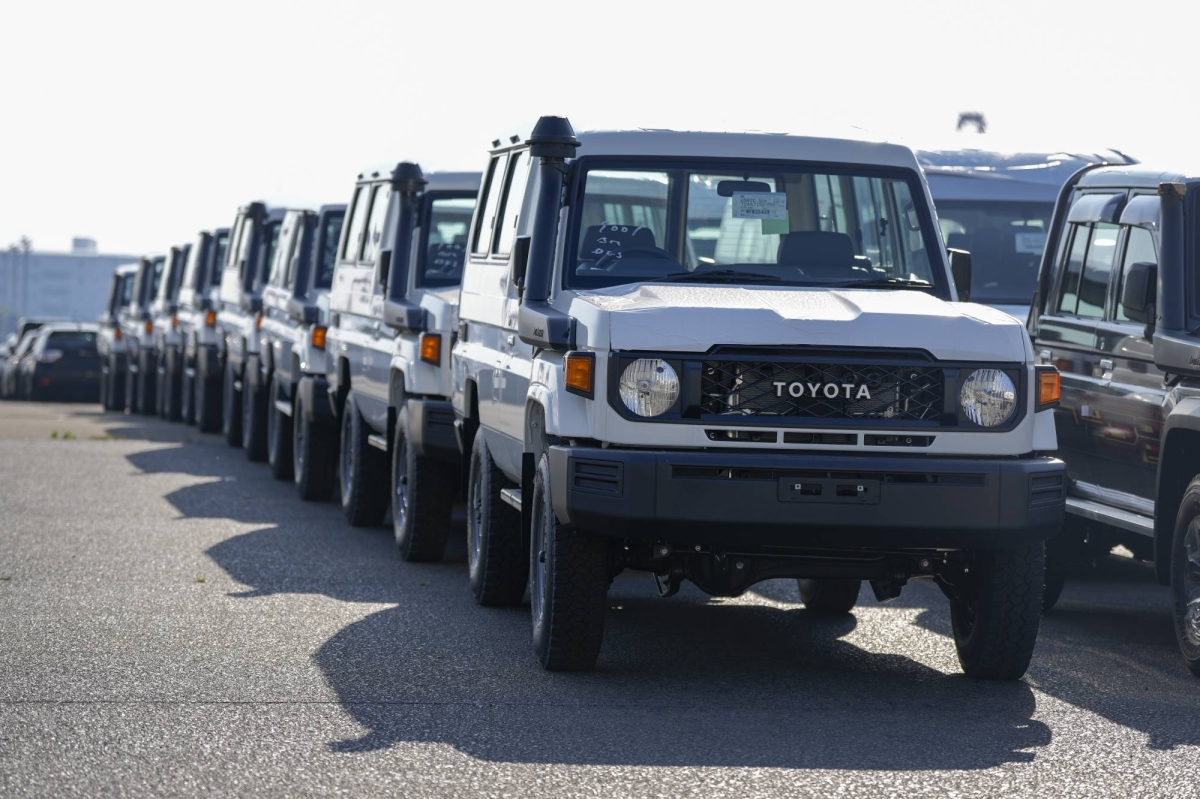Trump’s Tariff Deal Provides Limited Relief for Japanese Automakers as Rising Chinese Competition Looms
Trump’s Tariff Deal Provides Limited Relief for Japanese Automakers as Rising Chinese Competition Looms
By
David Goldfarb
Last updated:
July 28, 2025
First Published:
August 6, 2025

Photo: The Japan Times
Japanese Automakers Get Temporary Breather Amid Intensifying Global Competition
Japanese automakers welcomed last week’s announcement from U.S. President Donald Trump, which lowered tariffs on Japan-made vehicle imports to 15% from the previously threatened 25%. However, industry experts warn that this tariff reduction offers only modest relief as more significant challenges arise from China’s rapid automotive expansion and persistent domestic hurdles.
Details of the Trade Agreement and Its Implications
On July 22, President Trump confirmed that U.S. tariffs on Japanese cars would be set at 15%, significantly lower than the initially threatened 30% but still higher than the previous baseline.
Stefan Angrick, head of Japan and Frontier Market Economics at Moody’s Analytics, described the deal as “a relief” but cautioned, “a 15% tariff is still substantially higher than before and exceeds most market expectations.” This adjustment provides some certainty on costs for Japanese automakers but does not eliminate trade pressures entirely.
The Rising Threat from China’s Automotive Sector
The more formidable challenge, according to analysts, is the escalating competition from China — now the world’s largest car producer and exporter, especially in the electric vehicle (EV) segment. China’s aggressive push into advanced manufacturing and EV technology has rapidly eroded Japan’s once-dominant market position.
Karl Brauer, executive analyst at iSeeCars, emphasized that “lower-cost Chinese vehicles pose the single biggest threat to Japan’s auto industry and economic outlook.” Chinese automakers have not only strengthened their foothold domestically but are also expanding aggressively into Southeast Asian markets traditionally dominated by Japanese giants such as Toyota, Honda, and Nissan.
A recent 2025 PwC report reveals that Japanese automakers’ market share in ASEAN-6 countries — Indonesia, Malaysia, Thailand, the Philippines, Vietnam, and Singapore — declined from 68.2% in 2023 to 63.9% in 2024, highlighting the growing inroads made by Chinese competitors.
Angrick noted, “Markets like Thailand showcase China’s expanding presence where Japanese firms used to dominate.”
Beyond Southeast Asia, Australia — Japan’s second-largest car export market — is also increasingly contested. A study by the Australian Automotive Dealer Association predicts China could capture 43% of Australia’s vehicle imports by 2035, up from 17% in 2025, while Japan’s share is expected to drop from 32% to 22%.
Domestic Challenges Compound Pressure on Japanese Automakers
Aside from international competition, Japan’s automotive sector grapples with domestic economic issues including high inflation and subdued consumer spending, mirroring trends across other developed economies.
While Toyota maintains relative strength thanks to its global scale and diversified production, other major players like Nissan face mounting difficulties. Nissan’s woes stem from management missteps and restructuring plans, including the closure of seven out of 17 plants by fiscal 2027 and a 15% workforce reduction.
Mio Kato, founder of Lightstream Research, pointed out that smaller automakers like Subaru and Mazda are under greater strain but have advantages through partnerships with Toyota. Subaru and Toyota are collaborating on an electric vehicle expected in 2026, while Mazda shares manufacturing facilities with Toyota. Kato speculated these alliances might pave the way for a more consolidated Japanese auto industry by the decade’s end.
Predictability Amid Uncertainty
Despite ongoing challenges, the finalized 15% tariff provides Japanese automakers with clearer visibility on cost structures and pricing strategies, a crucial factor for planning amid volatile global trade conditions.
However, uncertainties remain regarding tariffs faced by competitors from South Korea, Mexico, and Canada, which could influence the competitive landscape and profitability for Japanese companies.
Kato summarized, “While Japan’s tariff situation is now clearer, shifts in competitiveness against other exporters could still impact profit outlooks significantly.”
Trump’s trade deal with Japan offers a much-needed pause in tariff escalation but is far from a cure-all. Japanese automakers face a dual threat from China’s rapid automotive growth and persistent domestic challenges. The evolving global auto market will test Japan’s ability to innovate and adapt in the years ahead.
Understanding these dynamics is essential for investors, industry watchers, and policymakers navigating the shifting terrain of international automotive trade.
Popular articles
Subscribe to unlock premium content
Disney’s Timeless Magic and How the Entertainment Giant Continues to Shape Culture and Innovation

Imran Khan’s Economic Missteps Amid Political Chaos in Pakistan

The Philippines’ Digital Shift How Remittances and BPO Are Fueling Growth

Disney’s Timeless Magic and How the Entertainment Giant Continues to Shape Culture and Innovation

Imran Khan’s Economic Missteps Amid Political Chaos in Pakistan

Disney’s Timeless Magic and How the Entertainment Giant Continues to Shape Culture and Innovation









